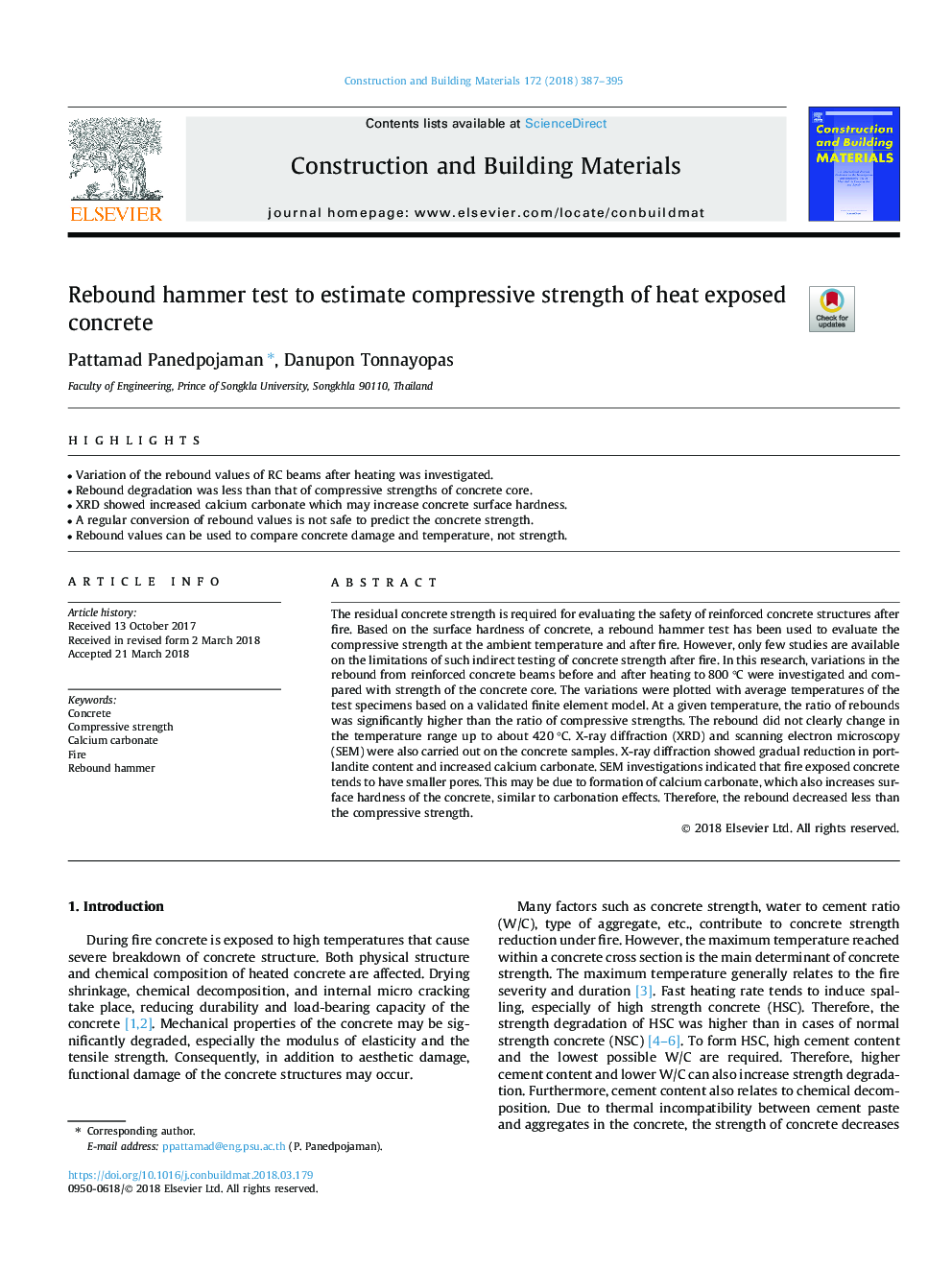| کد مقاله | کد نشریه | سال انتشار | مقاله انگلیسی | نسخه تمام متن |
|---|---|---|---|---|
| 6713850 | 1428734 | 2018 | 9 صفحه PDF | دانلود رایگان |
عنوان انگلیسی مقاله ISI
Rebound hammer test to estimate compressive strength of heat exposed concrete
ترجمه فارسی عنوان
تست چکش عقب برای ارزیابی مقاومت فشاری بتن گرما در معرض خطر
دانلود مقاله + سفارش ترجمه
دانلود مقاله ISI انگلیسی
رایگان برای ایرانیان
کلمات کلیدی
بتن، استحکام فشاری، کربنات کلسیم، آتش، چکش عقب
موضوعات مرتبط
مهندسی و علوم پایه
سایر رشته های مهندسی
مهندسی عمران و سازه
چکیده انگلیسی
The residual concrete strength is required for evaluating the safety of reinforced concrete structures after fire. Based on the surface hardness of concrete, a rebound hammer test has been used to evaluate the compressive strength at the ambient temperature and after fire. However, only few studies are available on the limitations of such indirect testing of concrete strength after fire. In this research, variations in the rebound from reinforced concrete beams before and after heating to 800â¯Â°C were investigated and compared with strength of the concrete core. The variations were plotted with average temperatures of the test specimens based on a validated finite element model. At a given temperature, the ratio of rebounds was significantly higher than the ratio of compressive strengths. The rebound did not clearly change in the temperature range up to about 420â¯Â°C. X-ray diffraction (XRD) and scanning electron microscopy (SEM) were also carried out on the concrete samples. X-ray diffraction showed gradual reduction in portlandite content and increased calcium carbonate. SEM investigations indicated that fire exposed concrete tends to have smaller pores. This may be due to formation of calcium carbonate, which also increases surface hardness of the concrete, similar to carbonation effects. Therefore, the rebound decreased less than the compressive strength.
ناشر
Database: Elsevier - ScienceDirect (ساینس دایرکت)
Journal: Construction and Building Materials - Volume 172, 30 May 2018, Pages 387-395
Journal: Construction and Building Materials - Volume 172, 30 May 2018, Pages 387-395
نویسندگان
Pattamad Panedpojaman, Danupon Tonnayopas,
